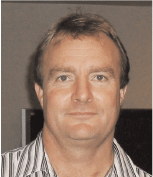Industry arrangements for oil spill preparedness
N. QuinnAMOSC.
The APPEA Journal 52(2) 681-681 https://doi.org/10.1071/AJ11095
Published: 2012
Abstract
In the post-Montara/Macondo world, the Australian petroleum industry has been actively represented on various working groups focused on the prevention, preparedness, and response to significant oil spill incidents. Through the Australian Marine Oil Spill Centre (AMOSC) based in Geelong, Victoria, cooperation and coordination with other international associations has been occurring to ensure ‘reasonable steps’ are taken to develop preparedness and response arrangements commensurate with the risks associated with industry activities. Concurrently and here in Australia, a thorough review of the National Plan has allowed industry to work with government to develop or amend a range of initiatives aimed at ensuring that industry and government strategies are integrated for maximum efficiency in all circumstances.
The scene has been set by a reviewed national risk assessment focusing on all activities of hydrocarbon movement around the Australian coastline. So what has Australian industry actually achieved post-Montara in prevention, preparedness, and response to oil spills? This extended abstract shares and explains the practical outcomes of the industry initiatives of oil spills in Australia. The outcomes are planning requirements, equipment location, mutual aid arrangements, training programs, and the extended services of industry oil spill response organisations in Australia and overseas.

Nick Quinn is the general manager of AMOSC. He joined the organisation in 2010 as operations manager. Before AMOSC, he spent six years with Maritime New Zealand as the group manager of marine pollution response services and 22 years in the New Zealand Navy. During his time in the navy, he qualified as a bridge watchkeeper, ship commander, and mine clearance diving officer—he spent 14 years in the naval diving group focusing on explosives operations, demolitions, and salvage diving. He was also involved in riverine operations in Cambodia; had a secondment to the Royal Malaysian Navy; spent service time with the Royal Australian Navy, Royal Navy, and United States Navy; and, commanded several New Zealand ships. He completed his career in the rank of commander and as the director of the New Zealand Defence Force Geospatial service. He has chaired the OPRC-HNS technical group at the International Maritime Organisation (IMO), attended a few marine oil spills and was recently one of the NZ national on-scene commanders who led the Rena response. |


